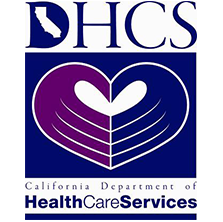Table of Contents
ToggleUnderstanding Opioids
According to recently released numbers by the Center of Disease Control and Prevention, 64,000 Americans died in 2016 due to drug overdoses, with the sharpest increase occurring among deaths related to opioids. The opioid epidemic is now declared a public health emergency in the United States, with the amount of opioid related overdoses quadrupling since 2009.
What Is Opium?
Opium is a naturally occurring narcotic that is derived from the sap of the unripe opium poppy plant. The dried latex substance is extracted from the bulbs and dries to a brown, gum-like substance. Opium is sold as bricks, lumps, or ground into a powder.
So, how does opium affect the body? Opium acts on the nervous system to block pain receptors. They bind to the receptors in the various parts of the brain and spinal cord to block the feeling of pain while also providing pleasurable feelings. Different forms of opium drugs, called opioids, result in different effects on the brain and body.
The naturally occurring opium is used to produce opioids. Opium contains chemical compounds including morphine and codeine, making morphine and codeine examples all-natural of opioids.
Opioids vs. Opiates
Originally, the term “opiates” referred to the natural substances that are derived from opium, like morphine and codeine. On the other hand, “opioids” was the term used to describe non-naturally occurring substances that acted as opiates by binding to the same receptors. These substances were either synthetic, chemically created, or semi-synthetic, which means chemically modified natural opiates.
However, most have now moved away from differentiating the two to using the term opioid for both natural and synthetic substances that act on opioid receptors. Opiates are a subset of opioids, so if the term is used it is referring to naturally occurring substances within the opioid class.
Signs of Opioid Abuse
Opioids are highly addictive, both physically and psychologically. After consistent use of opioids over time, the brain depends on them to function “normally”. Brain cells become less responsive to opioids when they become accustomed to their presence, so a person will have to increase their usage to get the same desired effects.
Addiction to opioids has the potential to begin when a person is prescribed opioids due to pain or surgical recovery. Unfortunately, this can lead to abuse even when taken as prescribed. It is important to look out for behavioral traits that can be used to identify if someone is abusing opioids. There are certain physical symptoms as well as lifestyle patterns. Some of the physical symptoms include:
- Extreme Drowsiness or Sedation
- Constricted Pupils
- Sudden Unconsciousness
- Nausea or Vomiting
- Slowed Reaction Times or Breathing
- Noticeable State of Euphoria
- Confusion
Behavioral and lifestyle changes may take place when someone has developed a dependence to opioids. This includes:
- Loss of Interest
- Disconnection
- Angry Outbursts
- Mood Swings
- Secrecy and Dishonesty
- Broken Commitments (i.e. School or Work)
Opium Withdrawal Symptoms
Different factors of the addiction will impact the types of opioid withdrawal symptoms a user will experience. Depending on the how long a user has been addicted, how often they use, and the amount of the narcotic used each time. Some common withdrawal symptoms include:
- Anxiety
- Depression
- Muscle Pain
- Runny Nose
- Aggravation
- Fever
- Teary Eyes
- Diarrhea
- Chills
- Abdominal Cramps
- Hypertension
- Rapid Heart Rate
- Vomiting
- Watery Eyes
- Excessive Sweating
Some withdrawal symptoms can last up to a week or longer. Although they range from mild to severe, withdrawal symptoms can often be so unbearable that users find themselves unable to handle them on their own.
The detoxification stage is difficult, but it is the first step towards a healthy recovery. At Safe Harbor Treatment Center, we provide the support needed during this difficult time. Our home away from home setting presents the most tranquil and comfortable environment for detox possible.



